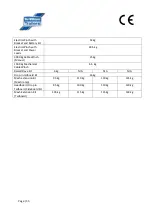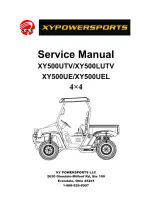
Page | 48
into the grease nipple on top of the damper body. Rock the damper head from side to side,
but not so much as to damage the bellows, so as to encourge the grease to spread.
•
If a siezed Drawtube us suspected then proceed to remove the damper as described in the
next section and, with the Damper removed, establish whether the Drawtube can be made to
slide easily. If it cannot then a bent Drawtube may be suspected. A previous “jacknifing” event
is a possible cause. In the event of a bent Drawtube the whole Coupler must be replaced.
•
Once the Coupling Head has been compressed release it suddenly
–
taking care that it does
not strike legs as it does so.
•
When released the damper should take about 2 seconds to fully extend the Coupling Head.
•
If the Coupling Head extends rapidly (in less than one second) then the Damper has lost its
damping function and must be replaced.
•
If the Coupling Head extends very slowly or only partially then the Damper has lost most of its
gas pressure and must be replaced.
5.8.3.2
–
Replacing the Coupling Damper
•
Contact distributor.
5.9
–
Breakaway Cable
•
As noted in section 3.3 The Breakaway Cable has the vitally important function of pulling the
trailer handbrake on in the event that the trailer seperates from the towing vehicle (a
Breakaway).
•
Only replace with a genuine IWT part.
5.9.1
–
Checking the Breakaway Cable
Look for kinks, fraying of the wire or anything else that looks like it might degrade the strength of the
cable.
5.9.2
–
Replacing the Breakaway Cable
•
Contact distributor.


































